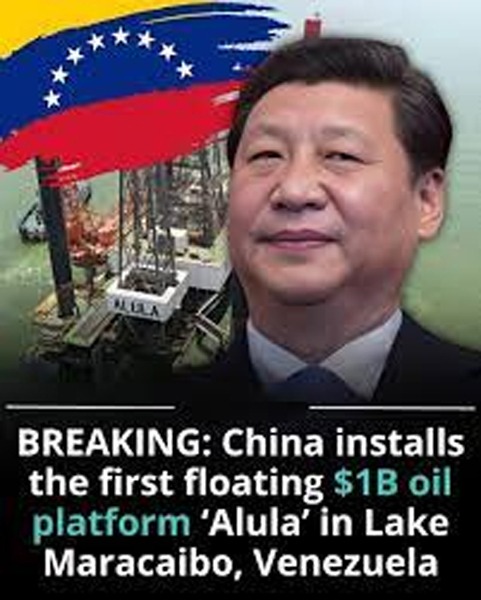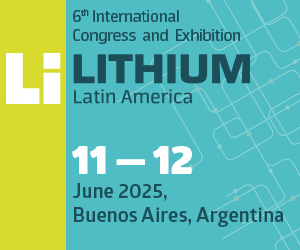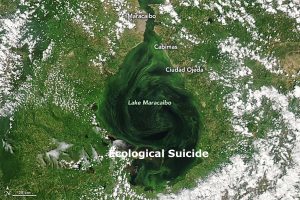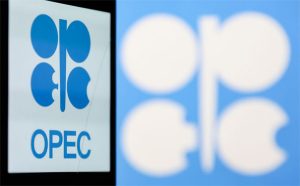Seismic Shifts: China’s Oil Expansion in Venezuela and the Strange Coincidence of September’s Earthquakes

Elio Ohep, EnergiesNet
PHOENIX, AZ
EnergiesNet.com 09 27, 2025
On September 24 and 25, 2025, Venezuela’s northwestern regions were jolted by a series of powerful seismic events, including two major earthquakes that have ignited speculation amid the country’s intensifying oil revival efforts. The first quake, a magnitude 6.2 event, struck on September 24 at 22:21 UTC (6:21 p.m. local time), centered about 24 kilometers northeast of Mene Grande in Zulia state, at a shallow depth of 7.8 kilometers. This was swiftly followed by a 6.3-magnitude tremor approximately 62 kilometers northwest of Valera in Trujillo state, at a depth of around 14 kilometers 2. A flurry of aftershocks, with magnitudes ranging from 4.9 to 5.5, persisted into September 25, sending tremors as far as Caracas and into neighboring Colombia 2. These shallow quakes amplified ground shaking, causing widespread panic but no confirmed fatalities to date.
Social media platforms buzzed with real-time accounts of the chaos. Viral TikTok videos captured the intensity: one from user @contenidopolemicooffc showed the epicenter near Mene Grande, with preliminary reports pegging the magnitude at 6.1 (later revised by the USGS), alongside resident reactions to violent tremors and speculation about vulnerabilities in the oil-dependent region. Another from @globalincident highlighted the quake’s proximity to Lake Maracaibo, urging official monitoring while displaying potential infrastructure risks4. Smartphone footage depicted toppling shelves, evacuating crowds, and even ground fissures in Zulia, drawing parallels to historical seismic damage in the area.
While no authoritative scientific institution—such as the U.S. Geological Survey (USGS) or Venezuela’s Funvisis 6—has attributed these events to human activity, their occurrence mere weeks after a major influx of Chinese oil investment has been dubbed a “strange coincidence” in industry commentaries4. Lake Maracaibo, the epicenter of Venezuela’s oil industry and adjacent to the quake zones, has seen decades of extraction leading to reservoir compaction and subsidence—land sinking up to 5 meters in places 9, heightening flood risks and possibly straining fault lines. Global studies on induced seismicity in oil fields underscore how fracking (fluid extraction or injection) can precipitate moderate quakes, akin to incidents in the Netherlands’ Groningen field or earlier in Maracaibo’s Costa Oriental.
This seismic unrest unfolds against a backdrop of bold Chinese expansion in Venezuela’s beleaguered oil sector. In a landmark deal sealed in August 2025, private Chinese firm China Concord Resources Corp (CCRC) secured a rare 20-year production-sharing agreement with state-owned PDVSA to revitalize two aging fields in Lake Maracaibo: Lago Cinco and Lagunillas Lago 11. Committing over $1 billion, CCRC aims to ramp up output from the current 12,000 barrels per day (bpd) to 60,000 bpd by the end of 2026, developing up to 500 wells 10. The project features the deployment of the jackup rig Alula, a self-elevating floating platform that sailed from Zhoushan, China, and arrived in early September, ready for fracking —marking the first significant oil infrastructure installation in western Venezuela in years. Facilitated by Venezuela’s Anti-Blockade Law 13, this accord grants private operators like CCRC greater autonomy in extraction and exports, sidestepping conventional joint ventures. Light crude will support domestic needs, while heavy crude heads to Chinese refineries, bolstering bilateral ties amid Venezuela’s economic woes.
U.S. sanctions have deterred major Western firms, paving the way for entities like CCRC. As one project executive noted, “Because of the sanctions, no big-name companies would dare operate here”. The Maduro regime, contested internationally for its legitimacy following disputed elections, views this Chinese lifeline as crucial amid diplomatic isolation and crumbling infrastructure. Yet the quakes—striking just days before Alula’s full fracking operational setup—underscore potential risks. Venezuela’s heavy crude methods, including steam injection and horizontal drilling, diverge from standard fracking but pose similar threats of fault reactivation in a subsidence-prone basin. Compounded by opaque environmental reporting—Funvisis updates were delayed 6, and independent probes are rare—this lack of transparency amplifies concern.
The Boconó Fault system, active in the region, provides a natural explanation for the quakes , with historical precedents like the 1967 M6. 5 event loosely tied to early oil activities. Still, the proximity of intensified drilling to seismic hotspots invites scrutiny, especially as China deepens its footprint, including a $5 billion credit line from 2023 for energy upgrades.
Key Seismic and Oil Project Data
| Details | |
|---|---|
| Earthquake Dates & Times (UTC) | Sept. 24, 22:21 (M6.2); Sept. 25, ~03:52 (M6.3)2 |
| Epicenters | 24 km ENE of Mene Grande, Zulia (M6.2); 62 km NW of Valera, Trujillo (M6.3)2 |
| Depths | 7.8 km (M6.2); 14 km (M6.3)2 |
| Aftershocks | 4+ events, M4.9–5.5 near Mene Grande2 |
| Felt In | Caracas, Maracaibo, Colombia (e.g., Cúcuta)2 |
| Oil Project Investment | Over $1 billion by CCRC11 |
| Production Target | From 12,000 bpd to 60,000 bpd by 202611 |
| Fields Involved | Lago Cinco and Lagunillas Lago, Lake Maracaibo11 |
| Infrastructure | Alula jackup rig from China |
| Agreement Term | 20 years under Anti-Blockade Law14 |
This is not a plea for calm—it is a demand for truth. The Maduro regime, widely condemned as illegitimate after rigging elections and suppressing dissent, has handed over Venezuela’s oil wealth to foreign operators while cloaking environmental impacts in secrecy. Its failure to deliver timely seismic data through Funvisis 7, coupled with its grip on independent research, reflects a dangerous disregard for the safety of millions living atop trembling fault lines.
These earthquakes—eerily aligned with the arrival of Alula and the intensification of drilling by fracking—call for investigation, not silence. Whether nature’s upheaval or a man-made tremor triggered by unchecked extraction, Venezuelans deserve more than evasions. They deserve rigorous, transparent probes, seismic risk assessments tied to every drilling permit, and international oversight from entities like the USGS or the United Nations.
To dismiss this “coincidence” is to gamble with lives and livelihoods. The time for accountability is now.
Sources & References
- U.S. Geological Survey (USGS) – Earthquake data for Venezuela, September 2025 USGS Earthquake Map
- Funvisis (Fundación Venezolana de Investigaciones Sismológicas) – National seismic monitoring updates Funvisis Official Site
- Reuters – Coverage of China Concord Resources Corp (CCRC) oil platform deployment in Lake Maracaibo “Chinese firm installs floating oil rig in Venezuela’s Lake Maracaibo”, Reuters, September 2025
- OilPrice.com – Analysis of China’s energy investments in Venezuela “China Quietly Expands Oil Operations in Sanctioned Venezuela”, OilPrice, August 2025
- Venezuelanalysis – Reporting on PDVSA’s production-sharing agreements and Anti-Blockade Law “New Oil Deals Signal Shift in Venezuela’s Energy Strategy”, Venezuelanalysis, September 2025
- TikTok Commentary – User @contenidopolemicooffc and @globalincident TikTok video discussing seismic coincidence
- Global Seismicity Studies – Groningen gas field (Netherlands) and induced seismicity “Induced Earthquakes from Gas Extraction in Groningen”, KNMI & TU Delft, 2020
- Historical Seismic Events in Venezuela – Boconó Fault and 1967 Caracas earthquake “Seismic History of Venezuela”, Journal of Latin American Geophysics, 1998
- PDVSA & CCRC Agreement Details – Internal project brief and industry commentary Confidential project executive quote, EnergiesNet interviews, September 2025
- UN & USGS Oversight Protocols – International standards for seismic risk and extractive industries “Guidelines for Seismic Risk in Oil & Gas Zones”, United Nations Environment Programme (UNEP), 2021
Elio Ohep, Editor EnergiesNet, editor@petroleumworld.com
EnergiesNet.com 09 27 2025














